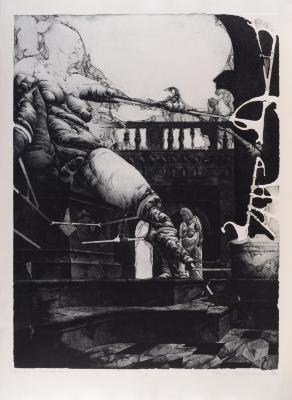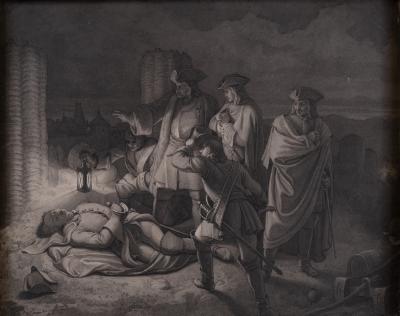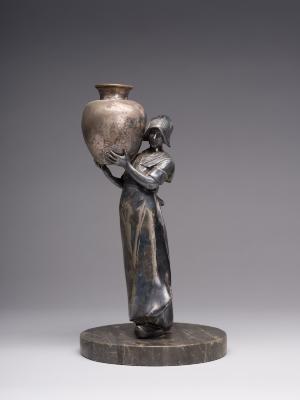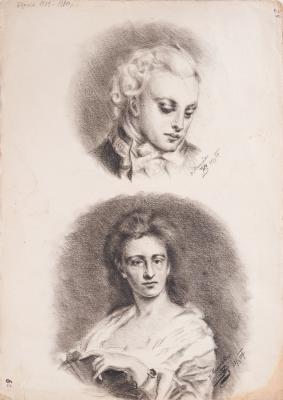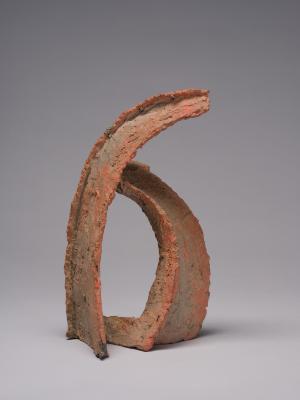The work is from the Neapolitan series. The multi-figure composition, Marinari sul Molo di Napoli, is known from Pinelli's engravings dated 1809 and 1815. However, in both previous versions, the musician was a citizen of Naples, singing and playing the lute for sailors. In the Lviv version, one of the sailors is depicted in the image of a singer and musician. It is a foreground composition which shows four Neapolitan sailors. One of them, depicted on the left, sits on the podium and plucks the lute strings; he is singing a long cantastoria about the knight Rinaldo. An experienced sailor with a pipe sits to the right, listening carefully to the song's story. Between them, two young sailors are standing embracing; they perceive with their souls the words of the romance, which was popular in Naples then. All the characters are dressed as Parisian sans-culottes; in particular, they wear long baggy pants, white shirts, and light vests; there are Phrygian caps on their heads; they are barefoot. The sailors' clothes are bright, with dominant blue, red, and yellow colours. The action occurs in the background of Vesuvius, depicted in blurred light blue tones.
Rinaldo is the most popular Italian character from the ballad "Orlando in Love" (Orlando Innamorato). It was written by the Renaissance author M. M. Boiardo.














